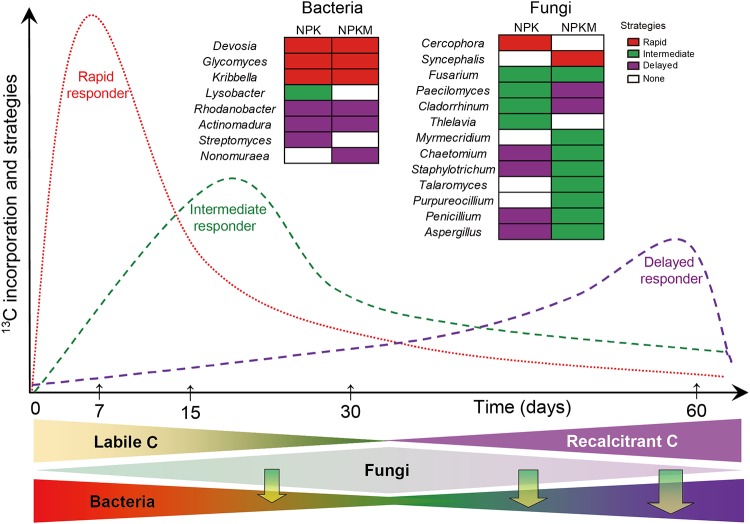FIG 7.
Conceptual diagram of microbial groups responsible for utilization and decomposition of rice residues in soils in relation to fertilization regimes. NPK- mineral fertilizers, NPKM- mineral fertilizers combined with manure. Line colors correspond to the colors assigned to the response strategies for rice residue utilization, as indicated on the right of the figure. Rapid responders, genera that displayed highest relative abundance at the outset (7 days after residue addition); intermediate responders, genera that displayed highest relative abundance at intermediate sample time points (between 15 and 30 days after residue addition); delayed responders, genera that displayed highest relative abundance at 60 days after residue addition. The lower part of the figure reflects C availability and the predominance of microbial groups. The vertical arrows represent the interactions between microbial groups in residue utilization (e.g., some carbon resources are provided by fungi to bacteria). Over time, the proportion of labile C in rice residue decreases while the proportion of recalcitrant C increases gradually. Most bacteria have a limited capacity to decompose recalcitrant components at later time points. Intermediate or delayed fungal responders can provide bacteria with resources that they cannot directly make from residues themselves, such as intermediate decomposition products (see text for details).

